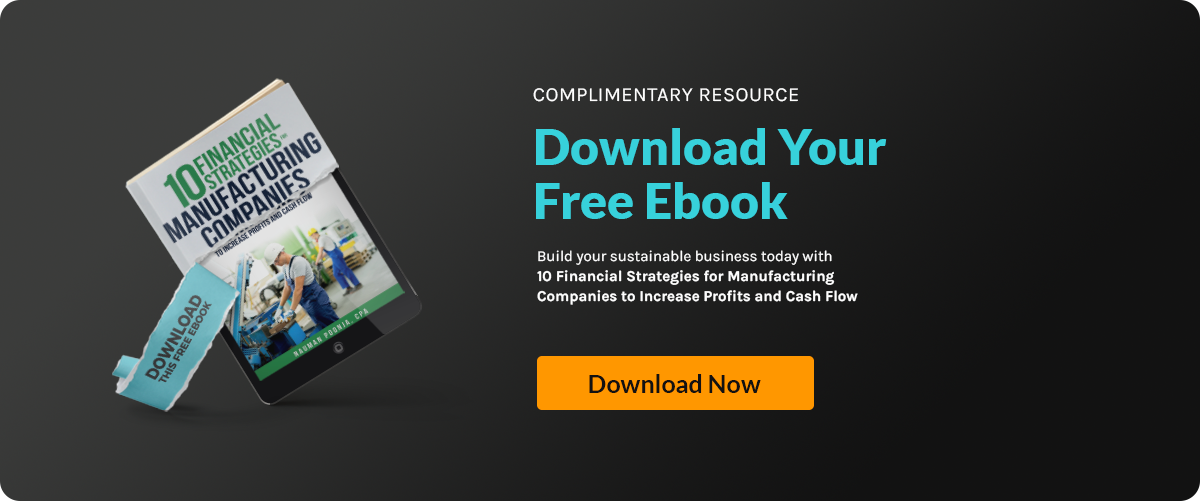Every successful business starts each year with a clear vision — but executing on that vision...
7 Essential Qualities of an Effective Profit and Loss Report

A Profit and Loss (P&L) report is one of the most essential financial documents for any business. It tells the story of your company’s profitability — not just whether you’re making money, but how and where that money is coming from, and just as critically, where it's going. But while every business generates a P&L report, not all of them are built to drive better decisions.
An effective P&L report goes beyond just rows of income and expense data. It delivers strategic insights, offers clarity for decision-making, and aligns with your business goals. Whether you're a founder, CFO, or investor, understanding what makes a P&L report effective can unlock significant value.
In this article, we’ll break down the defining qualities of an effective P&L report and how businesses can use it as a powerful financial management tool.
1. Accuracy and Consistency: The Non-Negotiables
At its core, a P&L report must be accurate and consistent. This sounds obvious, but even small discrepancies can lead to major misunderstandings.
- Accurate categorization of revenue and expenses ensures stakeholders are seeing a true picture of financial health.
- Consistent application of accounting methods, such as accrual vs. cash basis, is key to year-over-year comparisons.
Without clean, consistent data, trends can be misleading and decisions poorly informed. Automation tools and disciplined bookkeeping practices can play a major role in reducing human error and maintaining consistency.
For instance, if your monthly financial reporting lacks standardized expense categories, you're likely misreading your profitability trends. Accuracy is not just about numbers — it’s about trust.
2. Timeliness: Delivering Information When It’s Still Actionable
A P&L report is only as useful as it is timely. If you’re reviewing a report from three months ago, you’ve already lost the chance to act on that data.
Effective businesses implement timely financial reporting schedules — often monthly or even weekly — to keep a pulse on financial health. Real-time access to key metrics enables leadership to:
- Spot cost overruns early
- Adjust pricing or sales strategies quickly
- Anticipate cash flow issues before they escalate
Combining a timely P&L with cash flow forecasting allows businesses to maintain agility in today’s fast-paced markets.
3. Strategic Categorization: Clarity Through Structure
An effective P&L isn't just a dump of numbers — it’s structured for insight. One of the most overlooked but impactful qualities is strategic categorization.
This means grouping revenue and expenses in a way that aligns with how your business operates. For example:
- Segment revenue by product line or service category
- Break out variable vs. fixed expenses
- Separate direct costs from overhead
Strategic categorization helps management pinpoint which parts of the business are driving profit and which may be draining resources. With proper categorization, you can easily calculate gross margin by segment, assess operational efficiency, and evaluate strategic initiatives. It’s the difference between reading numbers and understanding what they mean.
4. Comparative Insights: Looking Beyond the Current Period
Numbers mean little in isolation. Effective P&L reports always incorporate comparative views to create context.
These comparisons may include:
- Month-over-month and year-over-year trends
- Budget vs. actuals
- Forecast vs. actuals
- Industry benchmarks
Comparative analysis allows leadership to spot trends, identify anomalies, and hold departments accountable. The ability to toggle between different views (monthly, quarterly, YTD) and compare performance across periods can make a static report a living tool for business strategy.
5. Visual Clarity: Designing for Readability
A P&L report may be data-rich, but it should never be difficult to digest. Visual clarity is key.
- Use clear headings and subcategories
- Maintain consistent formatting
- Employ data visualization for key metrics (e.g., bar charts, trend lines)
With modern accounting systems and reporting tools, it's easier than ever to design P&L dashboards that deliver both detail and clarity — enabling better collaboration between finance teams and decision-makers.
6. Customization: Aligning with Business Needs
No two businesses operate the same way — and your P&L shouldn’t be cookie-cutter either.
Customization is a core quality of an effective report. Your P&L should be structured to reflect your business model, priorities, and audience. For example:
- A SaaS company might track recurring vs. non-recurring revenue
- A retailer might focus on gross margin by store location
- A services firm might track labor cost as a percentage of revenue
Tailoring your P&L helps make it a tool for your decisions — not just a general compliance document.
7. Bring in the Tools: From Manual to Modern
Understanding what makes an effective P&L is only half the battle — implementing it requires the right tools.
Modern accounting platforms such as QuickBooks, Xero, and NetSuite offer built-in reporting capabilities that allow real-time visibility and standardized reporting. For businesses that need more advanced insight, Business Intelligence (BI) tools like Fathom, LivePlan, or Jirav can visualize data through dashboards and allow for customizable reporting by business unit, department, or product line.
Automation doesn’t just save time — it enables more accurate and timely decisions, allowing leadership to shift focus from data collection to action.
8. Strategic Application: P&Ls in Decision-Making Contexts
An effective P&L isn't just a financial snapshot — it's a strategic tool.
Executives and financial leaders use P&L reports in a variety of high-level decision-making contexts:
- Board meetings to discuss profitability trends
- Investor updates to showcase growth and operational efficiency
- Budgeting and forecasting to align goals with actual performance
Key performance indicators (KPIs) such as EBITDA, contribution margin, and gross margin by segment are often derived from P&Ls to evaluate business health and drive strategic alignment.
P&Ls are not just for accountants — they are decision engines for leadership.
Quick Checklist: Is Your P&L Report Effective?
Use this short diagnostic to evaluate the strength of your current Profit and Loss reporting:
- Are revenue and expenses categorized strategically?
- Can you view performance by business unit or segment?
- Do you receive reports on a monthly or real-time basis?
- Does your leadership team use the P&L to drive decisions?
- Is your P&L structured to support budgeting and investor reporting?
If you answered “no” to any of the above, your reporting may be costing you more than you think.
What We Look for in a Client’s P&L
At Accounovation, we routinely review client P&Ls as part of our advisory services. When evaluating reports, we focus on:
- Structure and segmentation — Does the report reflect how the business actually operates?
- Timeliness and reliability — Are reports delivered fast enough to drive action?
- Relevance of KPIs — Are we tracking the right performance indicators?
- Decision utility — Can leadership draw clear, actionable conclusions from the data?
We don’t just analyze — we align your financial reporting with your strategic direction.
Conclusion: Transform Your P&L into a Strategic Advantage
Is your current P&L giving you the insights you need — or just a record of what already happened?
An outdated or generic Profit and Loss report can quietly drain resources and delay smart decisions. In contrast, an effective, well-structured P&L fuels growth, accountability, and leadership clarity. It becomes a strategic asset — not just a reporting requirement.
If you’re relying on static reports or legacy structures, you may be missing critical opportunities to optimize profitability. Let’s change that. Contact us to schedule a P&L review and discover how smarter reporting can sharpen your financial edge







